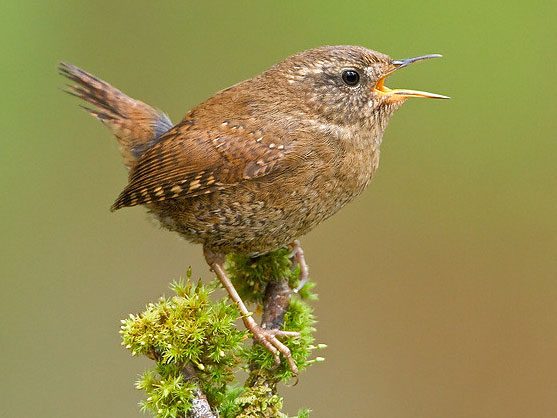How can a tiny Winter Wren sing so many sounds so loudly?

As with other splendid bird songs, our experience of Winter Wrens transcends a mechanical understanding of sound production. In 1884, the Reverend J. H. Langille described his experience listening to the Winter Wren: “I stand entranced and amazed, my very soul vibrating to this gushing melody, which seems at once expressive of the wildest joy and the tenderest sadness.”
Per unit weight, Winter Wrens have 10 times the sound power of a crowing rooster, and birds in the eastern population sing a good 16 notes per second—an impressive output that is not only exceeded but more than doubled by western birds, which sing 36 notes per second! Their rapid heartbeat, respiratory rate, and metabolic rate don’t explain the output, since larger and smaller birds don’t match this. But what is even more amazing is that these birds not only produce the sounds but react to tiny parts of the songs, so their ears and brain can resolve in real time individual notes that we cannot without replaying the songs at slow speed.
Taxonomic note: The Pacific Wren, Eurasian Wren, and Winter Wren all have similarly powerful singing abilities—the three were considered the same species until 2010.
Hear the Winter Wren’s vocal acrobatics in our All About Birds guide.

All About Birds
is a free resource
Available for everyone,
funded by donors like you
American Kestrel by Blair Dudeck / Macaulay Library
